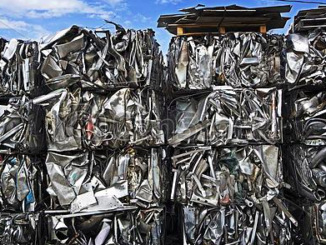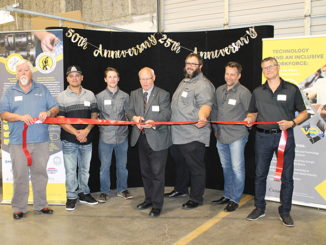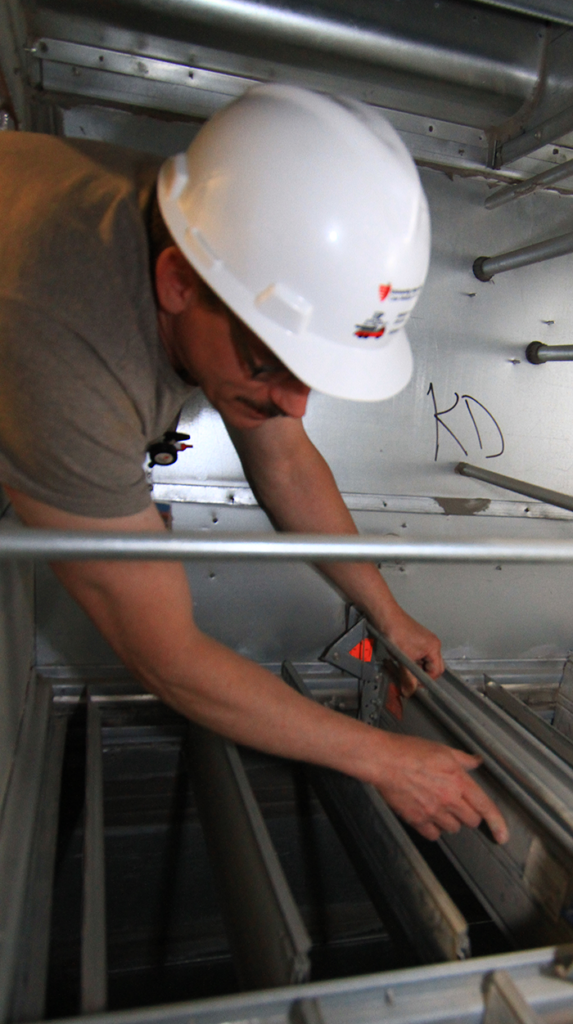
The Confined Space in Construction standard in Washington State went through a major overhaul in 2018. Updates to the standard were prompted by the Federal Occupational Safety and Health Administration (OSHA) adopting an updated Confined Space in Construction standard, 29 CFR 1026 Subpart AA. In Washington State the Federal OSHA standards do apply but are limited to projects where Federal OSHA has jurisdiction. The majority of employers in Washington State fall under the safety and health guidelines of the Division of Occupational Safety & Health (DOSH) our state OSHA program. What that means to SMACNA members is that employers in Washington must follow the DOSH standards not Federal OSHA.
The new requirements are similar to the previous standards; however, there are enough changes that we felt all SMACNA-Western Washington members needed to be updated to assure compliance.
“SMACNA-Western Washington contractors may encounter confined spaces in a variety of contexts,” says Travis Brock, principal/director of safety services for Shield of Armor Safety. “Some of these include ductwork, utility tunnels, pits, vaults, shaft work, or work in attics or crawl spaces. Some other possibilities are storage tanks, air handling equipment, sewers or waste water facilities, or in many aspects of refinery work”
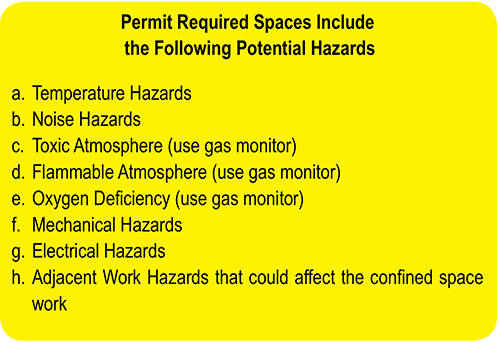
When evaluating a space an employer must determine that it is safe for all employees to enter or they are not allowed to enter the space. If the space meets the following guidelines it must be treated as a confined space.
- The space is large enough to enter.
- The space has limited means of access/egress.
- The space is not designed for continuous human occupancy.
Once the employer determines that it is a confined space they must determine what type of space it is. Previously, the documentation provided three options for classification of confined spaces: Permit required confined spaces, non-permit required spaces, and permit required but entering under alternant entry procedures.
“The new standard has eliminated the non-permitted definition and provided two primary classifications,” Brock says, “Permit required spaces and alternate methods spaces. Basically, the new standard requires you to classify all spaces as permitted until you can prove otherwise.”
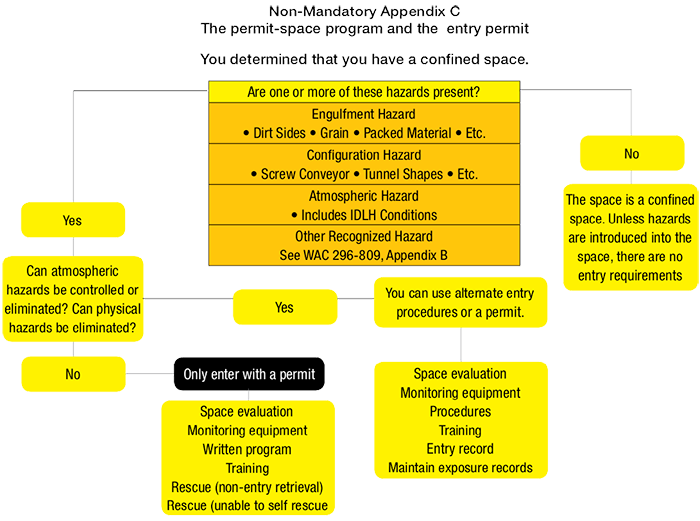
The above list of hazards must be eliminated for the space to be considered for use by alternate methods. Employers must follow all the same guidelines of the permit required confined space and document to prove you can utilize alternate method procedures. See Reference WAC 296-809-60002 for a complete guide to Alternate Method Entry.
Common mistakes contractors make when assessing safety around confined spaces include not classifying and or testing the air to prove there is no atmospheric hazards, Brock says. “Many gases that may be present are tasteless, odorless gases that are either lighter or heavier than air and rise to the top or sink to the bottom of a space and get trapped. If you are not utilizing a simple four-gas meter to check for adequate oxygen or explosive atmospheres and document that it is safe, you could be exposing workers.”
All employees working in confined spaces need adequate training, which includes understanding the required equipment needed for entry, identifying the common hazards of a space, knowing the proper work procedures for entry, and attending and supervising the work.
“A competent person supervisor needs to be identified for all confined pace entries,” Brock says. “This person is an employee who has been deemed competent by the employer and has the training, knowledge, skills, and ability to identify the risks and potential hazards associated with confined space entry and utilizes his or her authority to correct any hazards present.”
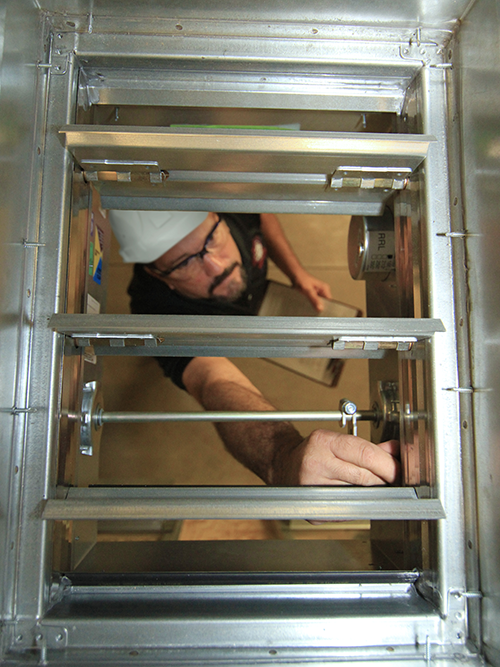
Minimizing risks means all confined spaces should be viewed as having the potential to contain a hazardous atmosphere until proven otherwise.
“If you utilize a four-gas monitor every time you enter a confined space, there should never be an issue of exposure to gases or a lack of oxygen,” Brock says. “Employees are protected as long as the air monitor is used properly and calibrated per the manufacturer requirements.”
The SMACNA Risk Management Committee meets regularly at the SMACNA-Western Washington office. The chapter has safety seminar set for May 29 at the Sea-Tac Marriott. See page X for this and other events, or contact Carrie Heinrich at the SMACNA-WW office for more details cheinrich@smacnaww.org.
Read about Confined Space regulation and hazard mitigation measures at http://www.lni.wa.gov/safety/rules/chapter/809/WAC296-809.PDF
For training, comments, or questions, please contact the SMACNA-Western Washington office or Travis Brock- CSP, ASP, CHST- Shield of Armor Safety at 206.617.6191 or tbrock@shieldofarmorsafety.com.
By / Jessica Kirby & Travis Brock
Photos courtesy of International Training Institute

